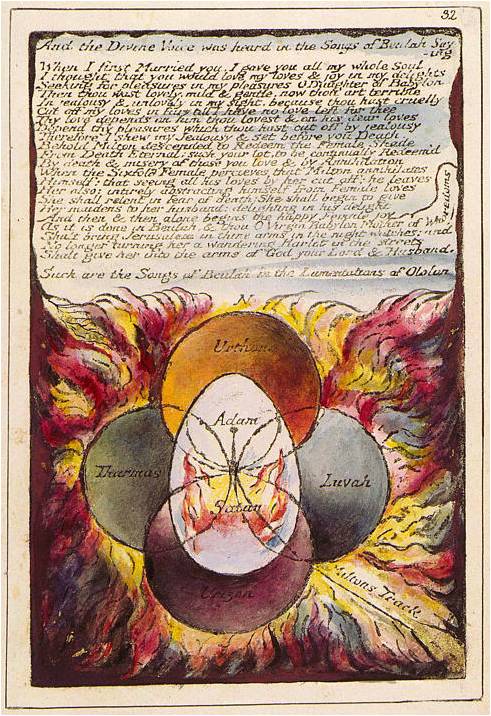“What is the price of Experience?” asks Enion in Blake’s unfinished and never-published epic The Four Zoas. (Or does she? According to Harold Bloom, “in the lament of Enion we hear for the first time in The Four Zoas the true voice of Blake himself.”) Retrospectively, her question was apt for my first ever year twelve class: how much would I pay, metaphorically, for the experience of teaching senior English? The prospect scared me. “Have you done much Blake?” asked my mentor teacher. “Yes” I replied, pinching myself.
It was a revision class, so after decoding an illustration and two contrasting readings of the lines (this one in character as Enion; this one by someone who’s read Bloom) I turned the learning over to the class, asking students to work in pairs to annotate the passage according to a pre-arranged set of topics: repetition; animal imagery; rhetorical questions; when/then; poetic structure; the five senses; punctuation; powerful adjectives; Biblical language; the use of “&.” We used sticky notes on A3 sheets – a pre-digital method that nonetheless translated beautifully into a Word document in which the notes were collected and saved for further revision. The students seemed pleased with their work, and the possibility of sharing it. During the group work and short presentations I saw heaps of evidence to support Vygotsky’s claim that “learning awakens a variety of internal developmental processes that are able to operate only when the child is interacting with people in her/his environment and in cooperation with her/his peers.”
Here’s where the hour went:
|
Teacher |
Students |
Time |
| Using Powerpoint presentation, present Bloom’s quotation about the lament of Enion. Apply this to Blake’s ambiguous use of the first-person voice. Who’s lamenting? | Take part in whole-class discussion. Do we agree with Bloom? | 10 |
| Listening: play recordings of Enion’s lament | Hear two contrasting readings of Enion’s lament | 5 |
| Responding: oversee discussion about the two readings. | How are these recordings different and what do they reveal about alternative interpretations of the passage. How would we read it? | 5 |
| Annotation activity: distribute topics and oversee activity.[repetition; animal imagery; rhetorical questions; when/then; poetic structure; the five senses; punctuation; powerful adjectives; Biblical language; use of &] | Working in pairs, practice using one technique of close-reading. What poetic effects are revealed when you apply your technique to these lines, and which particular lines respond most powerfully to your technique? Mark the lines on poem using sticky notes, and be ready to (literally) share your choice with the class. | 20 |
| Annotations: observe sheets and dialogue with students about their techniques, commenting on a way that’s helpful to the whole class. | On request, explain why you positioned your annotations at particular lines. Take notes on other students’ techniques and comments from the teacher. | 15 |

